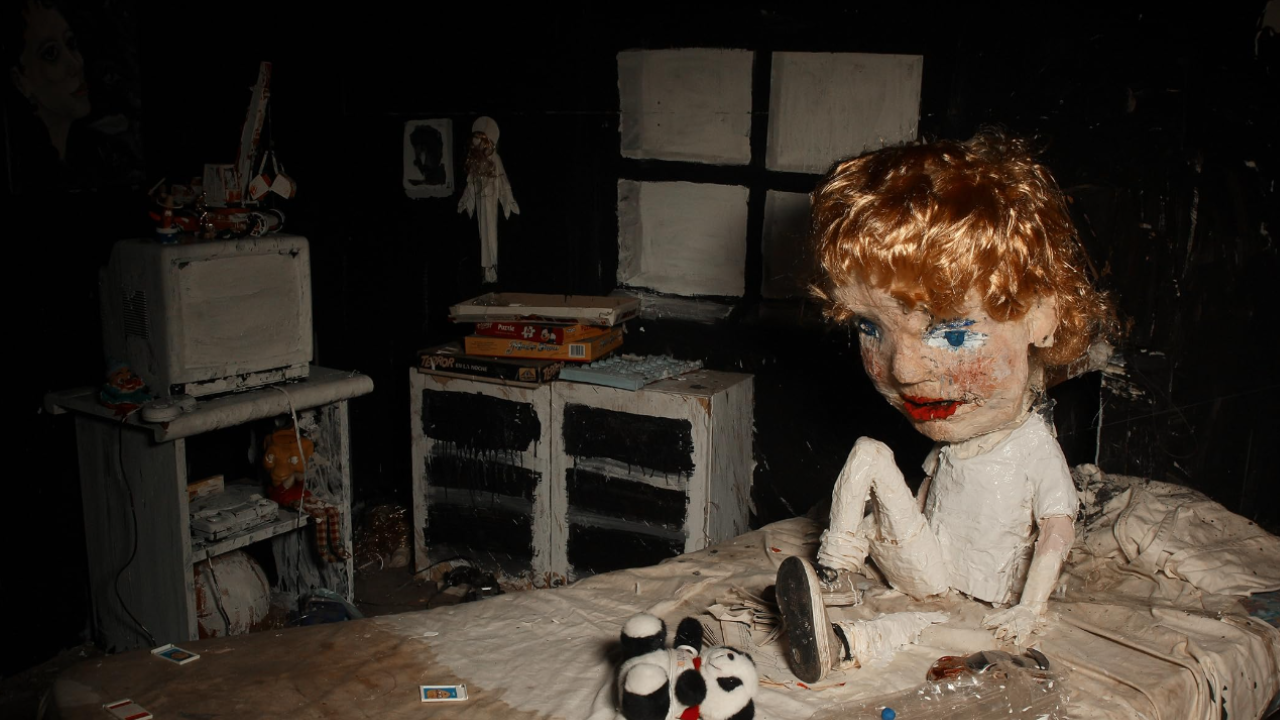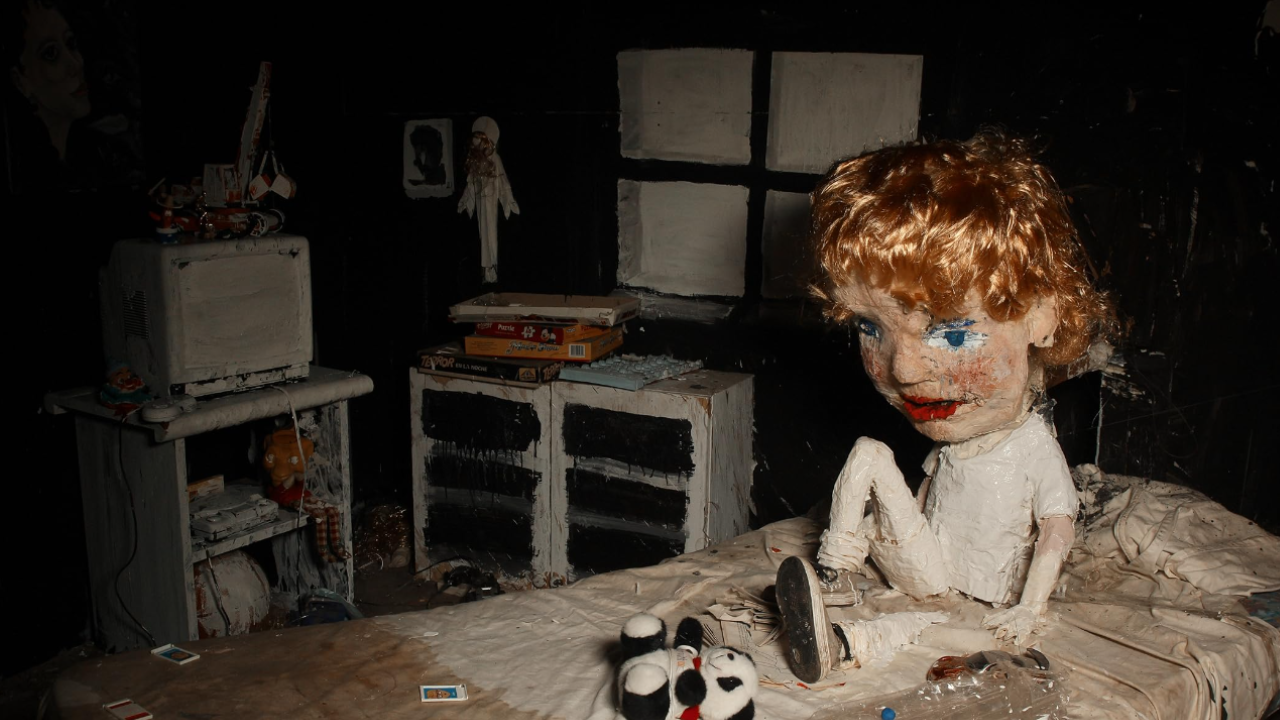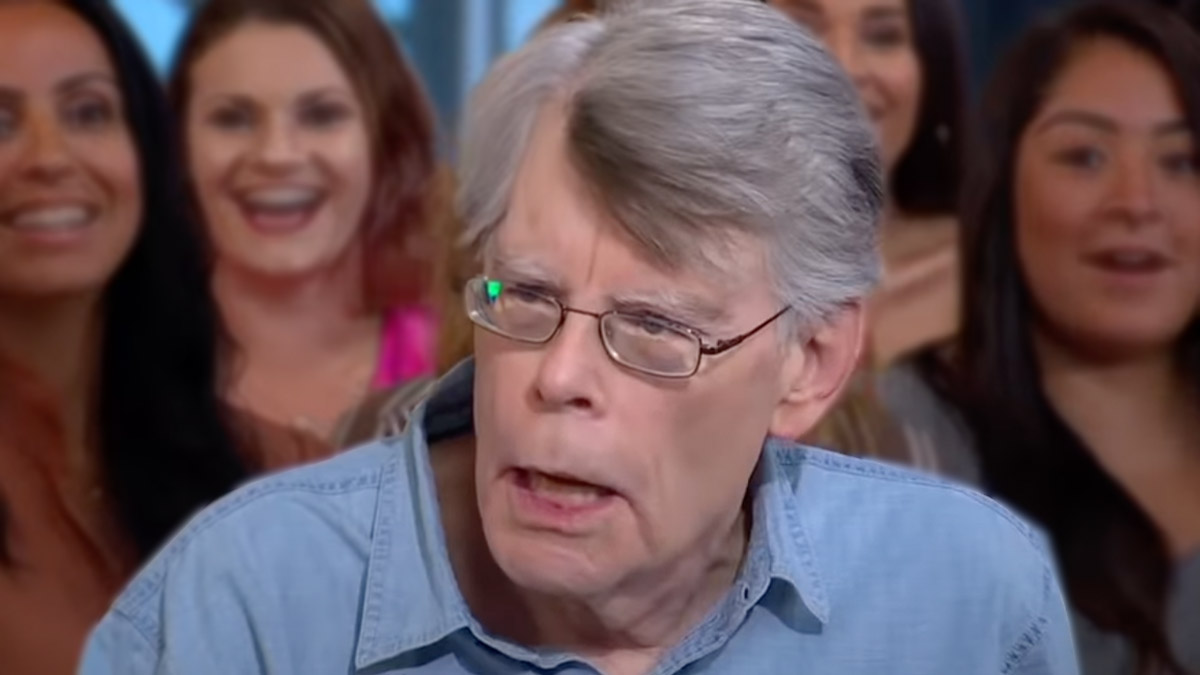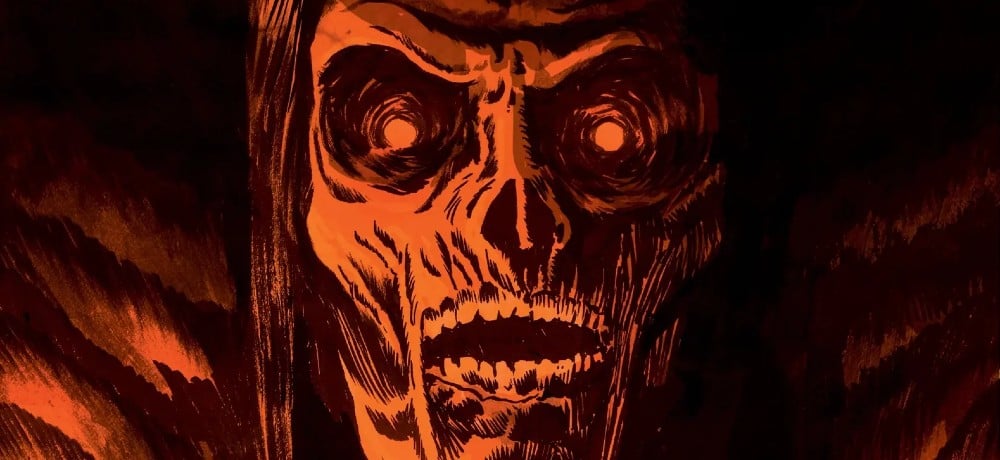‘The Wolf House’ And The Cycles Of Abuse


This article was initially published with Phasr Media.
Guillermo del Toro opened America’s eyes by bringing Latin Fantasy Horror into the mainstream during the mid 2000s. Contemporary filmmakers are continuing that tradition, including directors Joaquín Cociña and Cristóbal León. With their film The Wolf House (La Casa Lobo), the duo created something truly disturbing and distinctive in just under 80 minutes. The art style alone deserves its own praise before digging into the horrendous backstory of this film.
Frame by Frame
The Wolf House utilizes a combination of 2-D and 3-D elements to create a nightmare-inducing narrative. The entirety of the film, with the exclusion of the beginning clip, is done solely through animation with an intent of looking like one long take. This is just one of the ten rules Cociña and León stood by when creating their film.
“Despite shooting in so many different locations, the film plays as a single continuous shot, like the free-associative flow of thought.”
Ten Rules For Animating The Wolf House
This means we get to see the construction and deconstruction of the claymation. Animate objects transform into the inanimate. Paint slowly forges into clay as the color drains from the character. The story never stops and continues around the dizzying house. Just like in The Shinning where the hallways seem to enter a maze you can never escape, a feeling of claustrophobia emerges. The camera continuously shakes, creating an anxious sensation of wanting to slow down and take a breath. But, there is no time for breathing. Something is lurking within the painted walls, something sinister in the background. The history of Chile, starting with Colonia Dignidad, begins to surface.
Fusing Fantasy With Real Horrors in The Wolf House
Colonia Dignidad (Colony Dignity translated in English) was founded in 1961. Starting off as an anti-communist Baptist community, Paul Schaefer, an ex-Nazi, soon turned the colony into an off-the-grid cult. Fast forward about ten years and this compounded was guarded by barbed wire, a watch tower, and security dogs. This is the setting and backdrop directors Joaquín Cociña and Cristóbal León picked for The Wolf House.
The film follows a young girl named Maria who escapes the grasp of her childhood group. She finds shelter in an abandoned house with two pigs. Once confined, a sinister Wolf masquerades outside the house wanting to enter and bring her back.
Right off the bat, we can see the fantasy horror which Latin America is famous for. Only this film is playing as a propaganda story to, as the Wolf says, “dispel the horrible rumors that have stained our reputation”.
The reputation of Colonia Dignida that is.
What National Trauma Can Lead To
All this backstory may seem lengthy but it’s pertinent to understanding the depth of The Wolf House. And honestly this is just scratching the surface as there’s so many metaphors that went over my head even the second time around. But one thing was obvious upon the rewatch: this is a story about the collective trauma of Chile.
Chile suffered a lot through this time. Even post-2020, the history haunts them. The national trauma this country endured lives through the people and its stories. In this case, even leaving Colonia Dignidad during its peak leaves an imprint in your mind. Sometimes it’s hard to adapt outside of a world that you once knew. And its disgusting claws dig through your self until it’s overbearing. Malapdative behaviors are born and you find yourself repeating a cycle you once tried to flee. We see this in Maria’s story.
Maria loves to daydream and think for herself. Because of this, she is considered a rebel. This is everything that goes against being in the colony. And when she finds herself in punishment of 100 days of isolation for letting two pigs escape, she escapes. Quickly finding refuge in an abandoned house, The Wolf, who we can assume to be Paul Schaefer, tries his best to recapture Maria.
Twisting A Well-Known Fairy Tale
The Wolf House is a warped take on the three little pigs and the big bad wolf. When we think about this story, the morals are fairly obvious as its Themes revolve around hard work and determination paying off. Maria is building a home within this boarded house as the wolf outside stalks her and the two pigs. But just like the fairy tales before the capitalistic mouse got his hands on it, they ended in a more serious and sinister tone.
Making This Wolf House A Wolf Home
While Maria aimlessly walks around this claustrophobic house, she decides to turn the two escaped pigs, which she called Piggies with Hands and Piggies with Feet, into humans. The transformation is done by the indulgence of honey, which Colonia Dignidad was famous for exporting.
As we witness the long brutal process of the body horror at hand it’s hard to not imagine the intense torture sessions that occurred inside the colony. During Pinochet’s regime, over 2,000 executions were carried out at Colonia Dignida.
Upon the completion of the transformation, Maria tries to control the environment. She considers herself a mother, an angel, and a walking representation of love and care. Her first order of business is giving the new humans, Ana and Pedro, names that she feels give them dignity. She tells them, “You will never have to leave here,” and “The only way to stay safe is to listen to me.”
What was once done to Maria, she now tries to emulate. She tells stories of the colonies like The Dog in the House. A story about The House and its everlasting love for the dog. Only the dog is disobedient. The dog didn’t listen and ran away just as Maria did in the beginning. The dog gets lost “and the wind brought back to the house the smell of injuries and broken bones”.
Another story told later on in the film is how honey is pure yet wasn’t given to the darkest of skin because they’re lazy and dumb. Following the story Maria began closing all the doors and windows to keep the house full of secrets hidden from the outside world. She continues the cycle of abuse. Even outside of the abusive holds, Maria descends into the tyranny of what she initially wanted to escape.
The Cycles of Trauma Continue
About halfway through the film, Maria burns down the house and the Wolf returns to take her back. But due to her stubbornness, she decides to keep on with her tyrannical behavior. She adds honey to Pedro’s burned body and periodically gives him more to turn him bigger, healthier, and more handsome (in Maria’s words).

Eventually, Pedro begins to resemble Maria as his hair turns blonde and his eyes turn blue. Because of this she can’t help but admire his beauty. Ana follows the transformative procedure as well as she immerses in the honey. The pair goes from innocent farm animals to black-haired Indigenous people to the now “pure race”. The film shows them in true happiness and unity as they all resemble each other and wear old German clothing.
But everything comes to an end. The honey begins to dissipate and tensions grow. Ana and Pedro become more disobedient and take matters into their own hands. They tie up Maria, who calls for the Big Bad Wolf for help. He returns once again, this time successfully removing her from the home. Maria is now free and returns to the colony. As she escaped the Colonia in the beginning, it was hard for her to adapt into the new world. Her upbringing clouded her mind. Tyrannical views formed her psyche. But who could blame Maria, as national trauma can lead to maladaptive traits?
Behind the neverending eerie sensation the animation brings, behind the themes and metaphors, there’s a country with a hidden past. Latin American films have begun to emerge within the genre and mainstream public. As they do, the history follows suit. In the end, these narratives shine a light on overlooked events.
Categorized:Editorials Horror En Espanol





